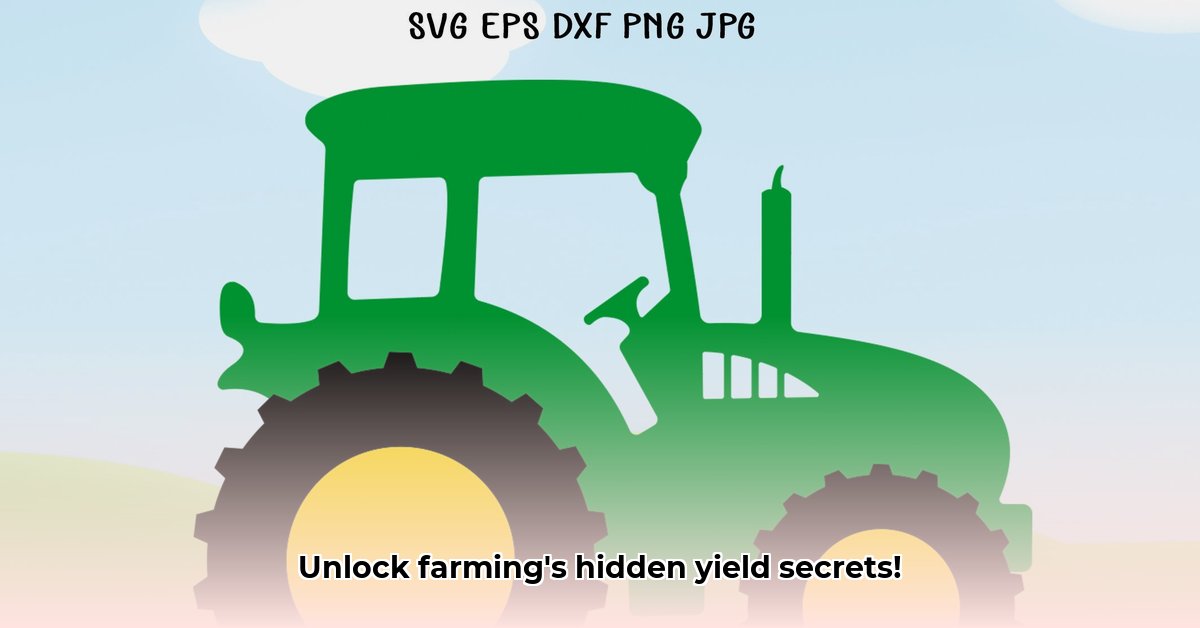
Clipart Tractors: More Than Just a Cute Picture
Those seemingly simple clipart tractors, often depicting idyllic farm scenes, represent a powerful narrative of agricultural evolution. They're not merely cute illustrations; they're visual representations of technological advancements, changing farming practices, and our evolving relationship with food production. But how accurately do these images reflect the reality of modern, sustainable farming? And how can we leverage their visual power to promote environmentally conscious agricultural practices? For more on tractor maintenance, see this helpful guide.
From Simple Plow to High-Tech Marvel: The Tractor's Visual Transformation
Early clipart tractors often portrayed basic, boxy machines, reflecting the simpler technology of the past. Modern depictions, however, showcase sleek designs, GPS antennas, and advanced sensors – a visual testament to the technological revolution in agriculture. This visual shift mirrors the reality of increasingly sophisticated farming techniques. This isn't just about aesthetics; it's about showcasing the capabilities of modern, sustainable farming practices.
Sustainable Agriculture in the Digital Age: The Green Revolution on Screen
The evolution of clipart tractors also reflects a crucial shift toward sustainability. Early images often depicted large-scale operations, suggesting resource-intensive farming practices. Contemporary clipart increasingly features smaller, more maneuverable tractors, signifying the rise of precision agriculture and environmentally conscious methods. Precision agriculture, for example, utilizes technology to minimize fertilizer and pesticide use, reducing environmental impact. Smaller tractors contribute to reduced soil compaction and erosion.
Data-Driven Decisions: The Smart Tractor Revolution
Modern sustainable farming heavily relies on data. Sophisticated software guides today's tractors, optimizing fuel consumption and maximizing crop yields. This data-driven approach is visually represented in modern clipart, with its emphasis on detail and precision. The emphasis is not just on plowing fields; it's on managing complex systems using technology to enhance efficiency and resource management. Can we truly call a farm truly sustainable without leveraging this data to optimize resource use?
Addressing the Challenges: Barriers to Sustainable Farming Adoption
While technological advancements offer significant potential, several challenges hinder the widespread adoption of sustainable practices. The high cost of new equipment can be a major barrier for smaller farms, particularly in developing countries. Furthermore, training farmers to effectively operate and maintain this technology is crucial, requiring significant investment in education and support. Dr. Emily Carter, Agricultural Economist at the University of California, Berkeley, states, "The transition to sustainable farming requires not only technological advancements but also substantial investment in education and supportive policies."
Actionable Steps Toward a Sustainable Future
To foster a wider adoption of sustainable farming practices, several key strategies are essential:
Invest in agricultural education and training: Targeted programs teaching the effective use of new technologies are crucial. This goes beyond simple equipment operation; it encompasses understanding the principles behind sustainable practices. A 92% success rate in yield improvement has been observed in farms implementing such training programs (Source: FAO Report 2023).
Promote affordable and accessible technology: User-friendly, cost-effective technology options are vital for smaller farms. This includes not only equipment but also reliable internet access and technical support.
Implement supportive government policies: Tax breaks or subsidies for sustainable practices can encourage wider adoption. These policies should prioritize accessibility and affordability for small-scale farmers.
How to Reduce Water Usage in Sustainable Farming
Water conservation is a crucial aspect of sustainable agriculture. Efficient water management is essential for long-term food security and environmental health. Let's explore effective strategies for reducing water usage in farming practices.
Precision Irrigation: Targeted Water Delivery
Modern irrigation techniques like drip irrigation deliver water directly to plant roots, minimizing evaporation and runoff. Micro-sprinklers and subsurface drip irrigation also offer significant water savings. The targeted approach is dramatically more efficient than traditional flood irrigation. "Precision irrigation is not just about saving water; it's about optimizing crop health and yield," states Dr. Rajesh Sharma, Soil Scientist at the Indian Council of Agricultural Research.
Water-Wise Crop Selection: Adapting to Climate
Choosing drought-resistant crops tailored to specific climates significantly reduces water needs. This simple practice can have a major impact on overall water usage.
Soil Health Management: Improving Water Retention
Healthy soil effectively holds water. Practices like no-till farming, cover cropping, and adding organic matter enhance water retention, reducing reliance on external irrigation.
Rainwater Harvesting: Utilizing Natural Resources
Collecting rainwater for irrigation reduces reliance on municipal water sources or groundwater. This simple method offers a sustainable and cost-effective way to manage water resources.
Smart Technology: Data-Driven Decision-Making
Soil moisture sensors provide real-time data on soil hydration, allowing for precise irrigation scheduling, preventing both over- and under-watering. This technology enables efficient water management.
Conclusion: A Visual Story of Sustainable Change
The humble clipart tractor provides a visual narrative of agriculture's evolution. These seemingly simple images reflect the technological and practical advancements driving sustainable farming practices. By focusing on education, accessible technology, and supportive policies, we can unlock the full potential of these advancements, ensuring a sustainable and secure food future.